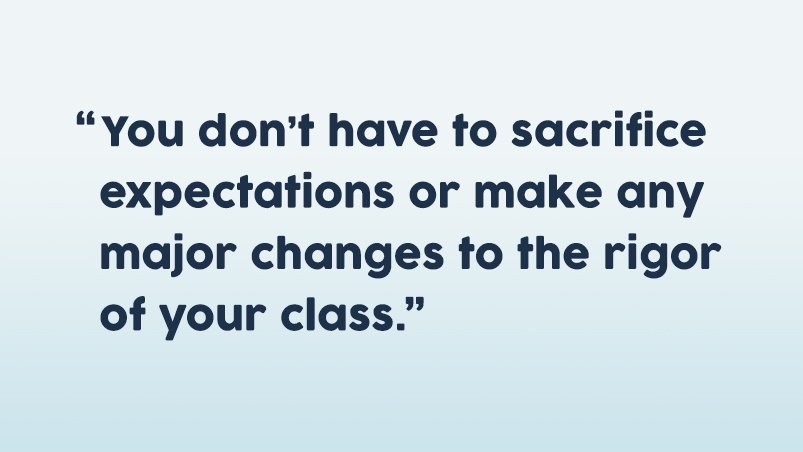
Many social studies K-12 teachers I’ve talked to want to introduce hands-on and experiential learning into their classrooms but are overwhelmed by where to start and how to implement it.
It’s not easy making changes in classroom instruction, even when your head tells you it’s a great idea. There’s the reluctance to try something new for fear of failure, whether by the students or yourself. Sometimes starting some new instructional technique can cause more classroom disruption than it’s worth. This list attempts to sum up all the considerations a teacher should make before beginning. Many of these ideas come from history and social studies teachers I’ve talked to over the years who have successfully implemented different levels and applications of hands-on learning in their classrooms.
Sign up here to get weekly notifications of new blogs posts like this one.
1. Start with yourself
First, start with yourself. Ask yourself, why (besides the nagging notion in the back of your head) you are doing this. What are the costs, what are the benefits? Review articles—beyond this one—and find research that will give you a good understanding of hands-on learning. Talk with other teachers who incorporate the technique and get their thoughts.
2. Realize that your students might also be hesitant to try a new thing
They too can have fear of failure or of looking bad. Talk with your students openly about how your instruction will change with hands-on learning activities. Explain to them in simple but clear terms how this will help expand their learning.
ACTIVITY
Give students an idea of the impact of hands-on
Have students write out instructions on how to tie their shoes, then give their instructions to a partner and have the partner try to tie their shoes only according to the instructions. Then have a student demonstrate how the shoe is tied while the partner follows along. Ask students from which “lesson” helped them understand the technique and remember it better.
3. Start small and build from there
Like any new thing, you want to start small. There is no such thing as too much or too little hands-on learning. Starting with small activities and integrating them gradually will help you find a level that is comfortable and effective for you and your students. Integrate hands-on learning into a part of your curriculum where you’re most confident.
4. When do you introduce hands-on learning?
This can be done at any time during the academic year. In many cases, teachers wait until they’ve had a chance to know their students’ strengths and weaknesses and their students have some time to know their teachers’ teaching style and expectations.
5. Plan carefully for the change
There is never enough time to do all the activities you’d like to do… and there won’t be. Understand that having students actually do something takes more time than just telling them. You’ll need to decide what will have to be cut—or, more accurately, replaced. How much time do you devote to a hands-on activity?

6. Set up reasonable expectations
Remember, you and your students are in this together. You don’t have to sacrifice expectations or make any major changes to the rigor of your class. Let your students know that hands-on learning activities aren’t a time to take it easy. Though the activities in your class will be a little more decentralized, with less of you “on the stage,” class behavior and academic expectations will be the same. Tell students that the work they do in hands-on learning activities will be part of their grade, but that the technique will be implemented gradually.
Things may not go well the first time, especially for students and teachers who haven’t engaged in hands-on learning before. Mistakes will be made and are part of the learning process. Remind students that effort and perseverance are two important keys to success.
7. Check with your administrator, and possibly, parents
Depending on the level of academic freedom you enjoy in your teaching assignments, it will be important to let your administrator know what you’re doing, especially if your school is more on the traditional side.
If appropriate, it might also be a good idea to let parents know what you’ll be doing in class, so that they aren’t surprised when their children come home with “wild stories” of classroom antics. Share the research you’ve done and examples of hands-on activities that you plan to use and why. Explain to both groups how students will benefit.
In conclusion
To recap, it’s important to understand why you want to implement hands-on learning in your classroom. Start small with manageable and appropriate hands-on learning activities, and plan carefully so you have enough time. Set achievable expectations that continue your high level of rigor. Finally, let administrators and parents know what you’re doing and why. Have fun and enjoy the experience.
Resources:
Brain-Based Research and the Need for Hands-on Learning
Hands-on Learning vs. Lecturing
Improve Learning with Hands-On Classroom Games, Activities
The Importance of Hands-On Learning
The Ultimate Guide to Hands-On Learning Activities for Middle School
See how hands-on learning can work in your classroom with secondary mapping programs
Greg Timmons has been a social studies teacher for over 30 years, teaching at both middle and high school levels. He is currently a writer and education consultant for PBS, Scholastic, and the History and Biography Channels. Greg has written numerous lessons for Social Studies School Service including Government Activators, and hosts INTERACT’s website Teacher Center: Your Community for Active Learning Strategies.

